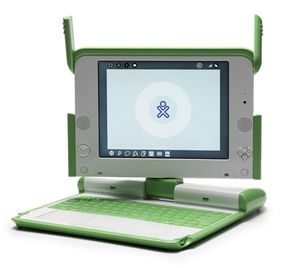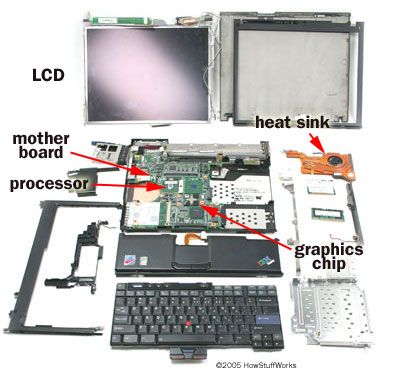By now, you've probably heard of the "$100 laptop," a product five years in the making. The XO laptop, as it's officially called, is produced by the One Laptop Per Child (OLPC) Foundation, a nonprofit organization founded by Nicholas Negroponte, who also founded the MIT Media Lab. The OLPC Foundation aims to provide these laptops to millions of children throughout the developing world in order to improve their education and their quality of life. Let's take a look at the XO laptop to find why it's generating so much buzz.
The XO laptop was designed to be lightweight, cheap and adaptable to the conditions of the developing world. While a $100 laptop is the goal, as of September 2007, the laptop costs about $188. Originally the OLPC Foundation said that governments must buy the laptop in batches of 25,000 to distribute to their citizens, but a new program will soon allow private citizens to purchase an XO.
Advertisement
As of Nov. 12, 2007, the Give 1 Get 1 (G1G1) program allowed U.S. residents to pay $399 to buy two XO laptops -- one for the purchaser and one for a child in need in a foreign country. The program's initial run lasted two weeks. To start, laptops purchased through this program were given to children in Afghanistan, Haiti, Rwanda and Cambodia. More laptops should be available for sale in the future, and more developing nations will be able to apply to join the G1G1 plan.
As of September 2007, about 7,000 laptops were being tested by children around the world. Many governments have expressed interest in the laptop or verbally committed to buying it, but Negroponte said that some haven't followed through on their promises. Still, enough computers were ordered -- observers estimated more than three million -- that full-scale production began in July 2007.
The OLPC Foundation faces some challenges and criticism besides getting governments to commit to buying the XO. A common question is: Why give a child a laptop when he might need food, water, electricity or other basic amenities? To that, the OLPC says that the XO laptop offers children a sense of ownership and ensures that they're no longer dependent on a corrupt or inept government to provide educational opportunities. The computer is a powerful tool for learning and collaboration, exposing children to a wealth of knowledge and providing opportunities that they would not normally have. It also replaces the need for textbooks, which are expensive, easily damaged and less interactive.
In many parts of the developing world, people live in large family groupings. The XO laptop allows children, parents, grandparents and cousins to teach each other. In some communities with limited electricity, children have used the laptop's bright screen as a light.
The OLPC Foundation faces some competitors, even among nonprofit organizations. Also, Michael Dell and Bill Gates have questioned aspects of the computer's design. Other companies have launched competing low-cost laptops, though none with the scale or publicity of the OLPC Foundation project. Intel initially criticized the device, then started selling its own low-cost laptop, and finally decided to join the OLPC project.
Next, we'll take a look at the remarkable technology behind the XO.
Advertisement




